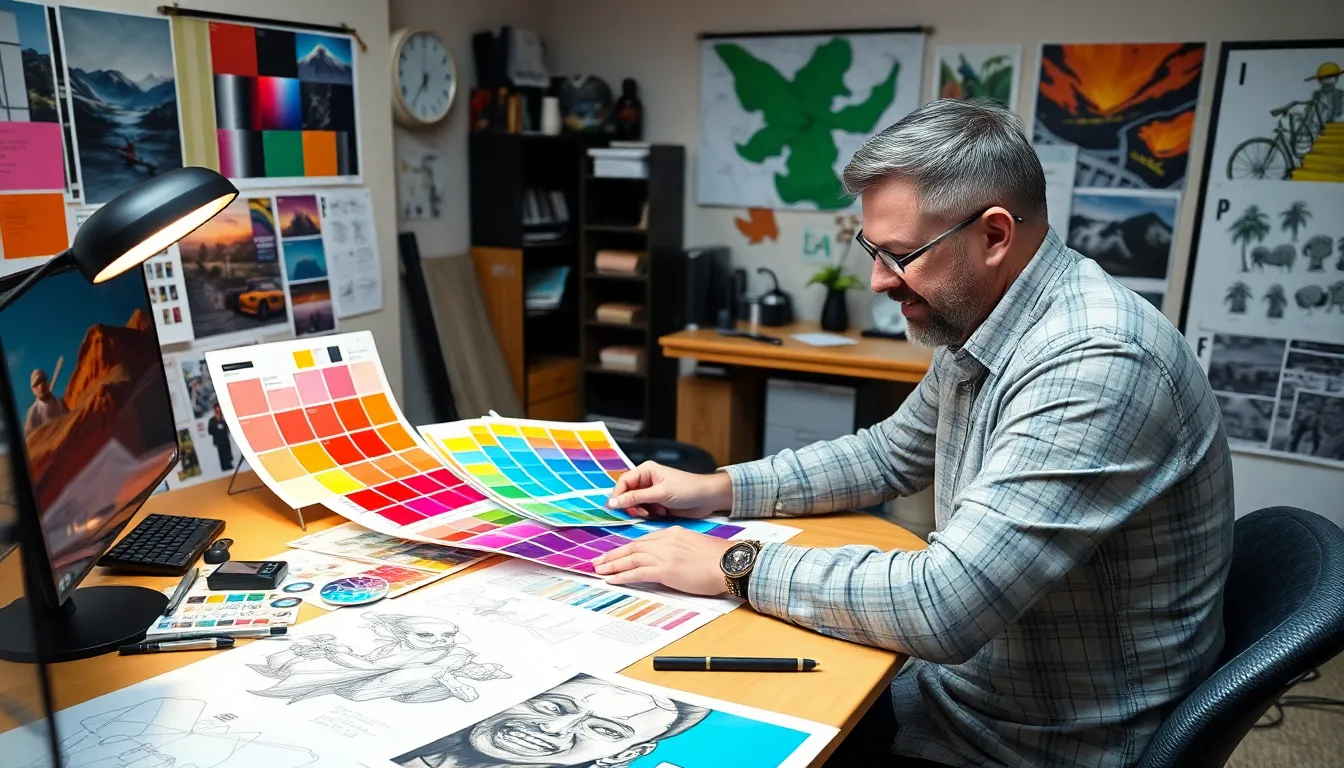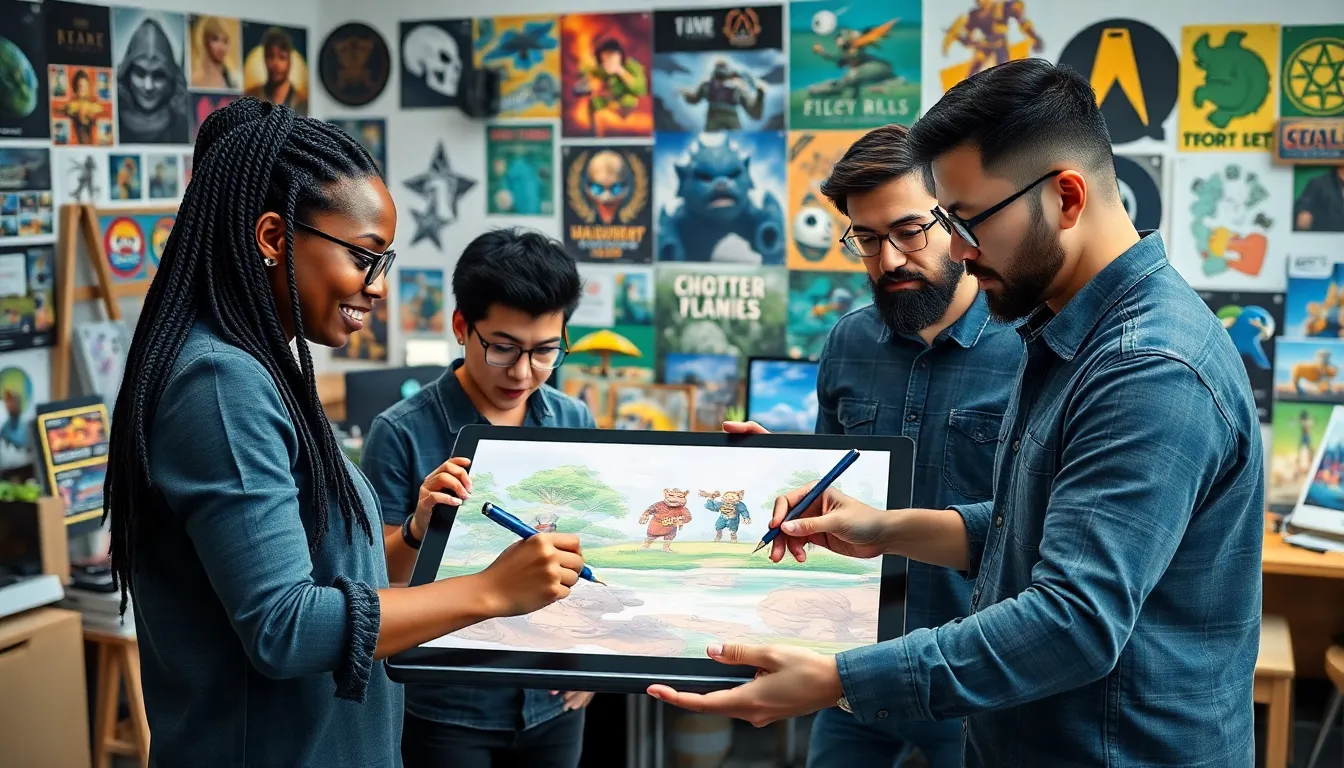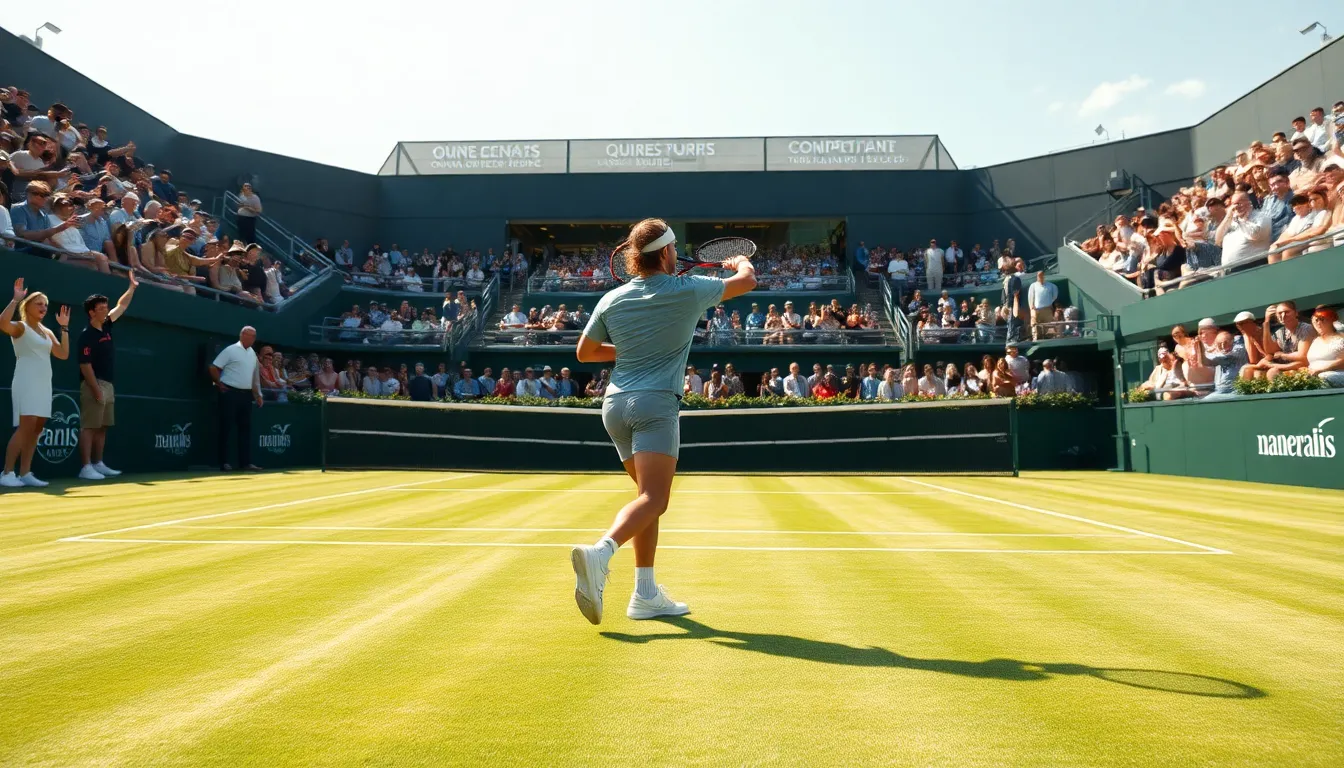Table of Contents
ToggleIn the vibrant world of video games, art direction is the unsung hero that transforms pixels into breathtaking landscapes and unforgettable characters. It’s not just about making things pretty; it’s about crafting a visual narrative that pulls players in and keeps them hooked. Imagine wandering through a lush forest or battling fierce monsters—all thanks to the magic of skilled art direction.
Understanding Game Art Direction
Game art direction shapes visual storytelling in video games, intertwining artistry with technical execution. It plays a vital role in defining the game’s mood, style, and overall player experience.
Definition and Importance
Game art direction involves guiding the visual elements and style of a game. It creates a cohesive look that enhances storytelling, character design, and environmental aesthetics. Effective art direction captures players’ attention, drawing them into immersive worlds. Art direction not only influences individual graphics but also dictates the emotional tone, making every visual detail significant in engaging players. Without strong art direction, a game might lack memorable visuals and fail to communicate its themes effectively. Players benefit from rich, consistent designs that contribute to their overall experience.
Key Roles and Responsibilities
Art directors oversee the visual aesthetics and thematic coherence of a video game. They coordinate with artists, designers, and developers to establish a unified style. In adjusting visual components, they ensure that characters, environments, and animations align with the game’s vision. Managing project goals, art directors set guidelines for color palettes, textures, and lighting. They also provide feedback to enhance the quality of artwork during development. Collaboration with marketing teams ensures that visuals resonate with target audiences. Strong leadership and clear communication are essential for art directors to inspire creative teams and realize a compelling visual narrative.
Elements of Game Art Direction

Game art direction encompasses various components that shape the overall visual identity of a video game. These elements work in harmony to create an engaging and immersive player experience.
Visual Style and Aesthetics
Visual style defines the unique look of a game, encompassing character design, environment details, and overall graphical fidelity. An art director chooses specific artistic styles, whether realistic, stylized, or abstract, to convey themes and emotions. This choice influences players’ perceptions and their connection to the game world. Furthermore, aesthetics incorporate how these visual elements interact, establishing a coherent atmosphere. Game developers often utilize reference materials to ensure the visual style aligns with the narrative, enhancing storytelling and user engagement.
Color Theory and Mood
Color theory plays a critical role in shaping mood and emotional impact within a game. Different colors evoke distinct feelings; for example, warm colors like red and yellow can invoke excitement or danger, while cool tones such as blue and green often convey calm or tranquility. Additionally, art directors strategically implement color palettes to reflect character traits or environmental themes. Effective use of color establishes a visual hierarchy, guiding players’ attention to key elements in the scene. This approach aids in storytelling, allowing players to intuitively grasp mood and atmosphere through visual cues.
The Process of Game Art Direction
Game art direction involves several critical phases that shape the game’s visual narrative. Each phase contributes to creating an engaging gaming experience.
Concept Development
Concept development begins with brainstorming ideas that align with the game’s vision. Art directors collaborate with writers and designers, ensuring coherence in themes and visuals. Initial sketches and mood boards help establish the game’s visual style, allowing collaborators to visualize characters, environments, and overall aesthetic. This foundational work sets the stage for all subsequent phases. Visual references are collected to guide decision-making, anchoring artistic choices in a broader context and ensuring that concepts resonate with the intended audience.
Asset Creation and Management
Asset creation and management encompass the production of 2D and 3D elements. This phase includes modeling, texturing, and animating characters and environments. Artists use specialized software to bring concepts to life, ensuring that all assets adhere to the established visual style. Maintaining organized pipelines streamlines collaboration and quality control throughout the development process. Regular reviews and feedback sessions help address any inconsistencies, enabling the team to refine and enhance visual elements. By effectively managing assets, art directors ensure the final product aligns seamlessly with the original vision and delivers an immersive experience for players.
Case Studies in Game Art Direction
Art direction in video games often showcases remarkable creativity and innovation. Examining successful examples reveals distinct approaches that enhance player engagement.
Successful Examples
“Journey” exemplifies art direction with its stunning visuals and emotional narrative. The game’s use of color gradients creates a vivid atmosphere, influencing players’ feelings. “Celeste” features pixel art that perfectly balances nostalgia with modern gameplay. The vibrant color palette and level design work together to convey themes of struggle and triumph. “The Legend of Zelda: Breath of the Wild” merges realistic art with stylization, crafting an expansive world that invites exploration. Each environment feels alive, allowing players to form connections through the immersive landscape.
Lessons Learned
Art direction reinforces the importance of cohesive visual storytelling. Observing “Journey” and its use of simplicity highlights the impact of a concise design philosophy. Players appreciate clarity in gameplay, evident in “Celeste” where visuals align tightly with game mechanics. Other successes demonstrate collaboration between teams, ensuring that every visual element supports the narrative. Incorporating color theory effectively influences player emotions, as seen in “Breath of the Wild.” Lessons include understanding the relationship between visuals and storytelling, enhancing immersion through thoughtful design choices.
Future Trends in Game Art Direction
Emerging trends shape the landscape of game art direction, fostering innovation and creativity.
Emerging Technologies
New technologies like virtual reality (VR) and augmented reality (AR) significantly impact game art direction. Designers embrace these tools to create more immersive experiences that blend the real world with digital environments. Integrating machine learning assists in automating certain aspects of art creation, allowing for the generation of dynamic visuals. 3D scanning technology enhances realism by capturing real-world textures and details for game assets. These advancements encourage art directors to push the boundaries of visual storytelling, crafting environments that respond to player interactions.
Evolving Player Expectations
As players become more discerning, their expectations for visual quality and storytelling evolve. Players increasingly seek more engaging and emotionally resonant experiences that connect them to game characters and narratives. This demand encourages art directors to fine-tune visual styles, ensuring unique aesthetics that resonate with targeted audiences. Personalization also gains importance, as customizable visual elements allow players to tailor experiences to their preferences. Producers must also consider inclusivity in design, reflecting diverse perspectives in visual narratives. Prioritizing these factors enhances the player experience, keeping them invested in the gaming world.
Art direction in video games is a powerful tool that shapes how players experience and connect with a game. By blending artistry with technical skill, art directors create visual narratives that resonate deeply with players. The thoughtful use of color, style, and cohesive design not only enhances storytelling but also elevates emotional engagement.
As technology continues to evolve, the potential for innovative art direction grows. Future trends promise even more immersive experiences that blend reality with imagination. By prioritizing inclusivity and unique aesthetics, art directors can craft visual worlds that invite players to explore and feel a genuine connection. The journey of game art direction is just beginning, and its impact on the gaming landscape will only become more profound.







